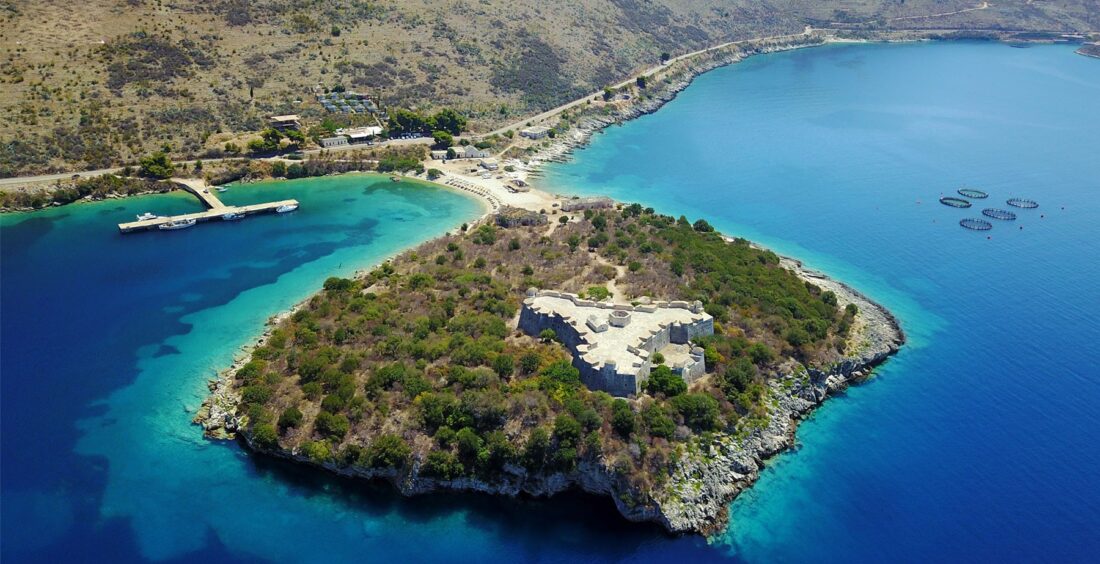Porto Palermo Castle, located in Himarë, is believed to have been built in the 19th century by Ali Pasha of Tepelena, with assistance from French military engineers. However, historians debate its origins, suggesting it may have been constructed earlier by the Venetians due to its triangular shape, which resembles the Venetian Triangle Castle at Butrint. The castle is triangular in design, featuring three pentagonal towers at its corners, all constructed from limestone. Its thick walls, ranging from 3.2 to 3.5 meters, are made of regularly set stone blocks. Inside, visitors can find paintings, including one of Ali Pasha himself. The ground floor houses a central prison oriented toward the sea. The castle’s maze-like interior of rooms and hallways offers an immersive experience for visitors. While its exact origins are debated, Porto Palermo Castle is historically significant as a defensive structure attributed to Ali Pasha, reflecting his role in controlling key areas of Albania and Greece. The castle’s design and fortifications suggest it was used as a military stronghold. Additionally, the area north of the castle features the Porto Palermo Tunnel, an abandoned submarine base from Albania’s communist era in the 1960s–1980s, adding another layer of historical intrigue.
Porto Palermo Castle is a popular tourist destination and can be visited for a small fee. Its maze-like interior invites exploration, providing visitors with a unique experience of history and architecture. The nearby abandoned submarine base adds to its appeal. Visitors are drawn to its fascinating design, historical significance, and the stunning natural setting of Porto Palermo Bay.
Porto Palermo Castle is an important cultural and historical landmark. Its architecture, historical debates, and connection to Ali Pasha and Venetian influences reflect Albania’s rich heritage. The castle also serves as a valuable economic asset, attracting tourists with its beauty and historical intrigue. Preserving such landmarks is essential to safeguarding their cultural and historical significance for future generations while supporting sustainable tourism and local economies.







